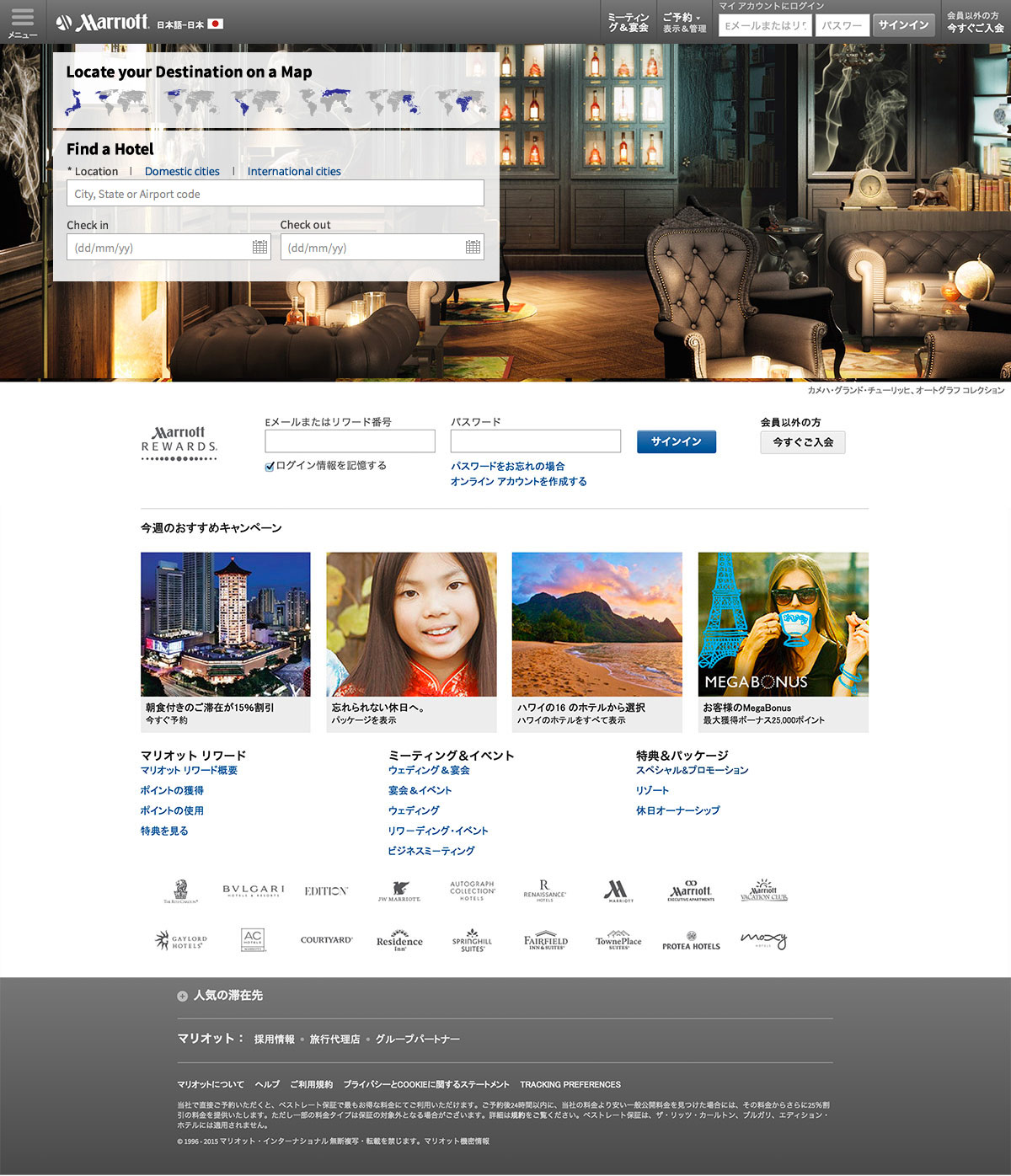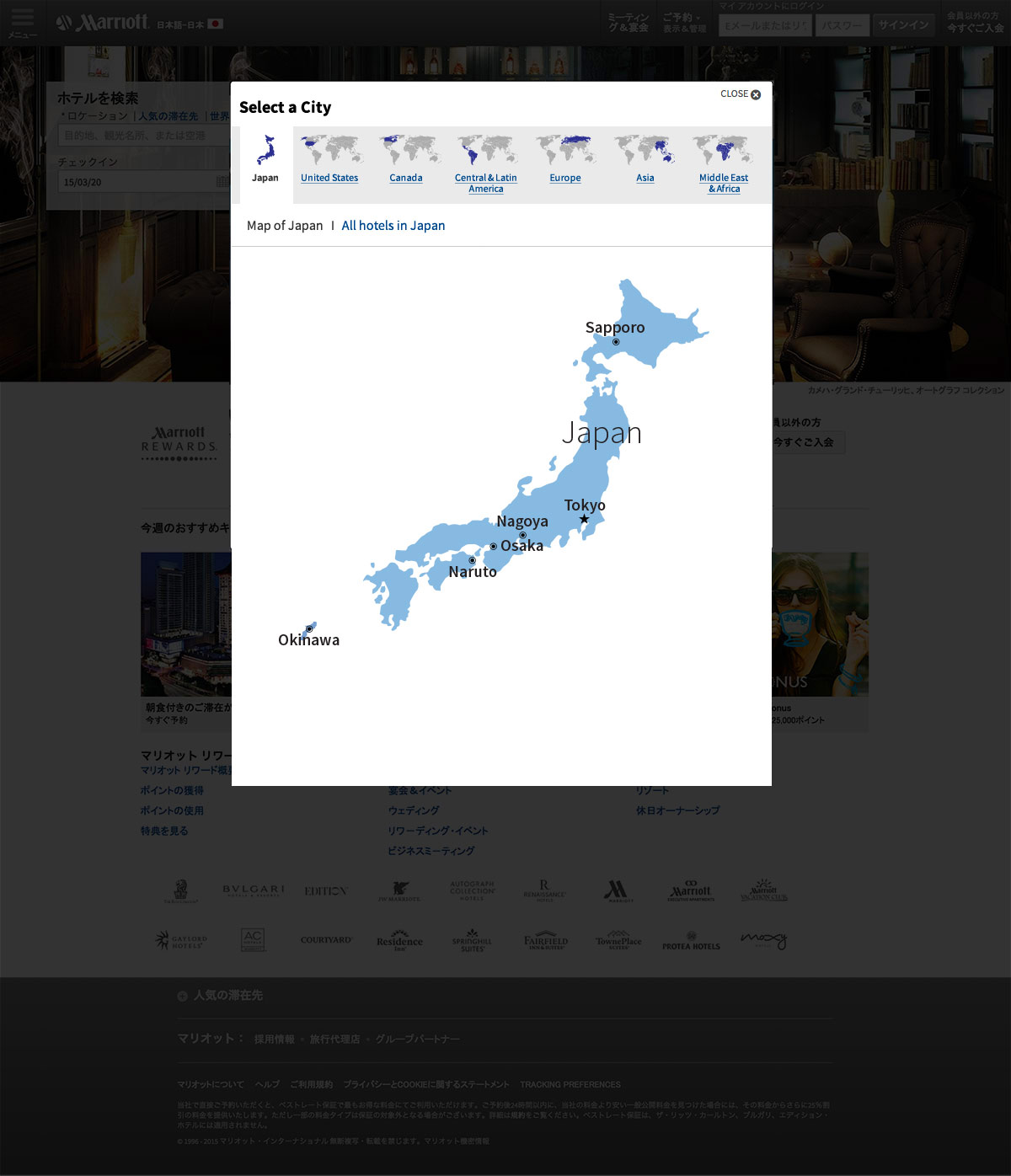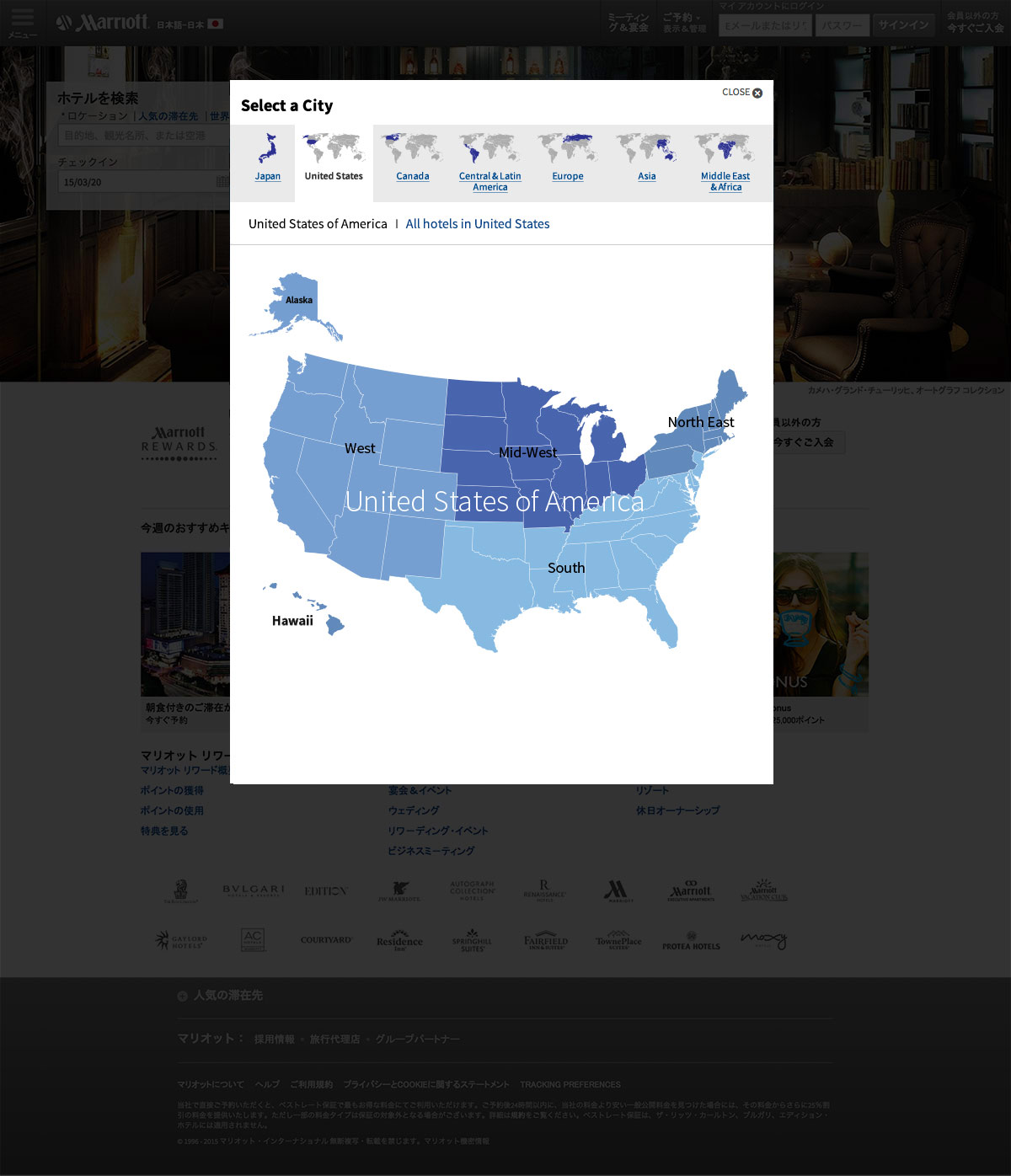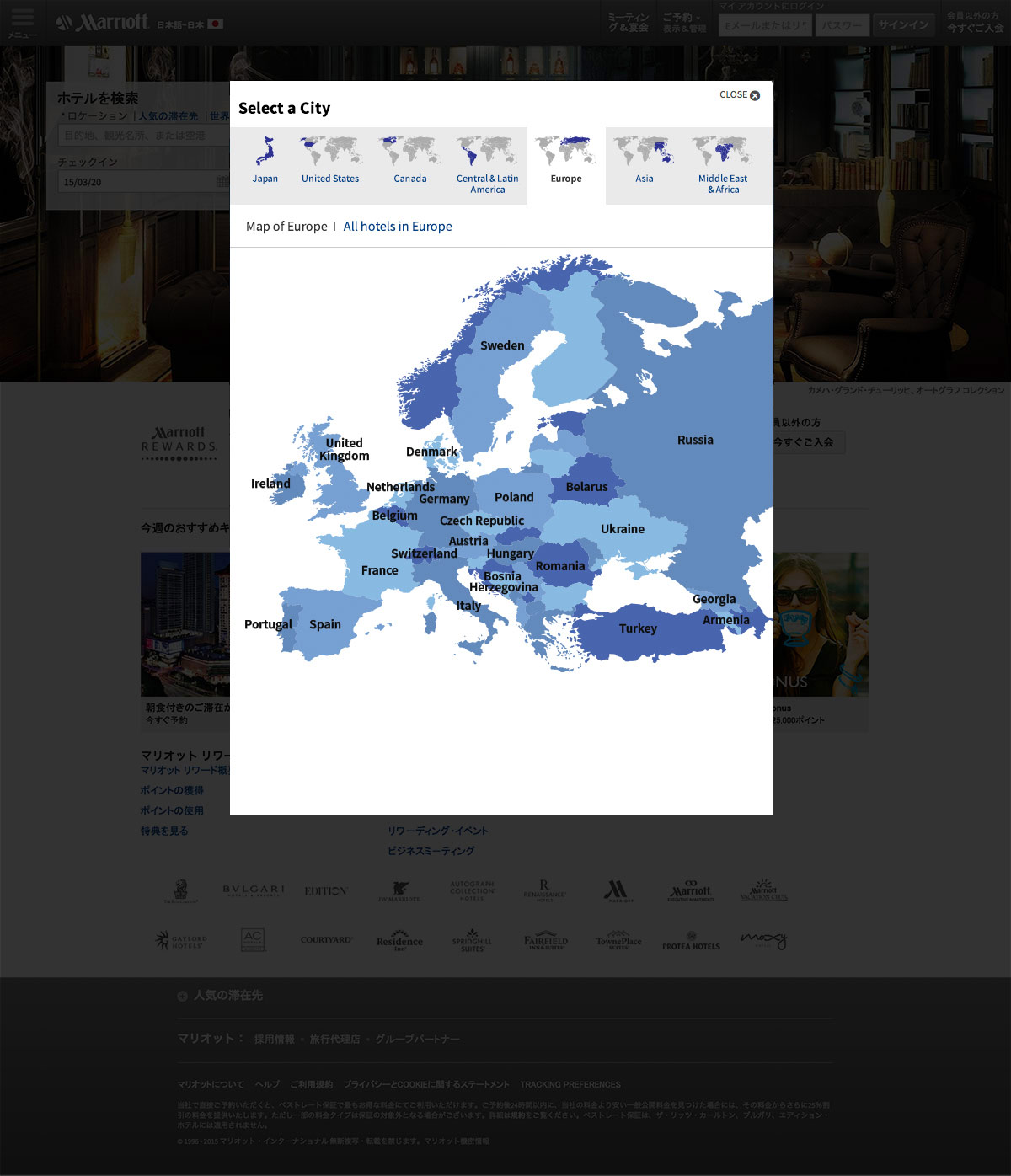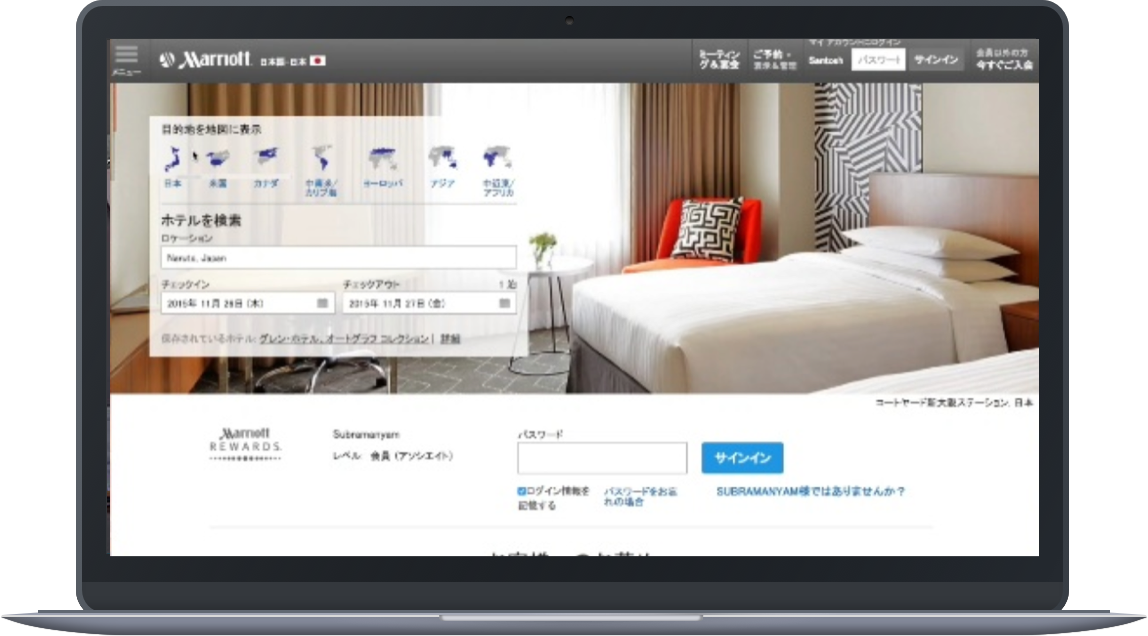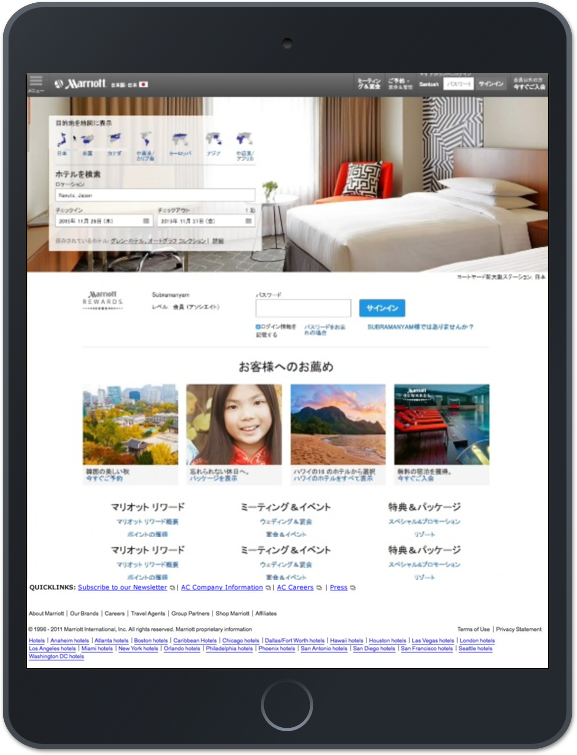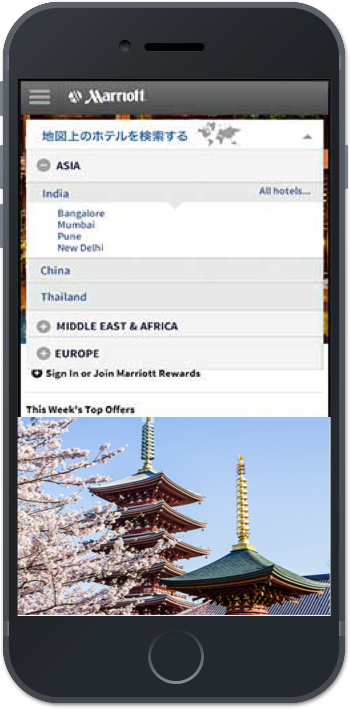Marriott was on an expansion mission in Asia. This project was part of the globalization effort of Marriott platform and is specifically geared towards Japanese market. I was leading multiple global digital strategies, projects and teams when we embarked on this project, supporting a 3 year roadmap for emerging markets in BRICS, APAC, Latin America, Africa and the Middle East. I am responsible for all aspects of creative development, oversee the creative process and make creative decisions and responsible for the integrity of strategic, functional and visual design solutions that are tied to Product line KPIs in particular and business in general.
My Role
I was responsible for all aspects of creative development, oversee the creative process and make creative decisions and responsible for the integrity of strategic, functional and visual design solutions that were tied to Product line KPIs in particular and to the larger business strategy of Marriott digital experiences.
Goals
Traveler task model
A typical travelers task model starts with search (one of the most important entry points especially in eCommerce), followed by evaluation phase where the shopper is evaluating the product offering and how it speaks to their needs. In some cases there may be users who want to call travel sites and book or directly book online on the hotel website. Online bookings have been increasing exponentially and understanding the users mental model is very important to create delightful experiences.
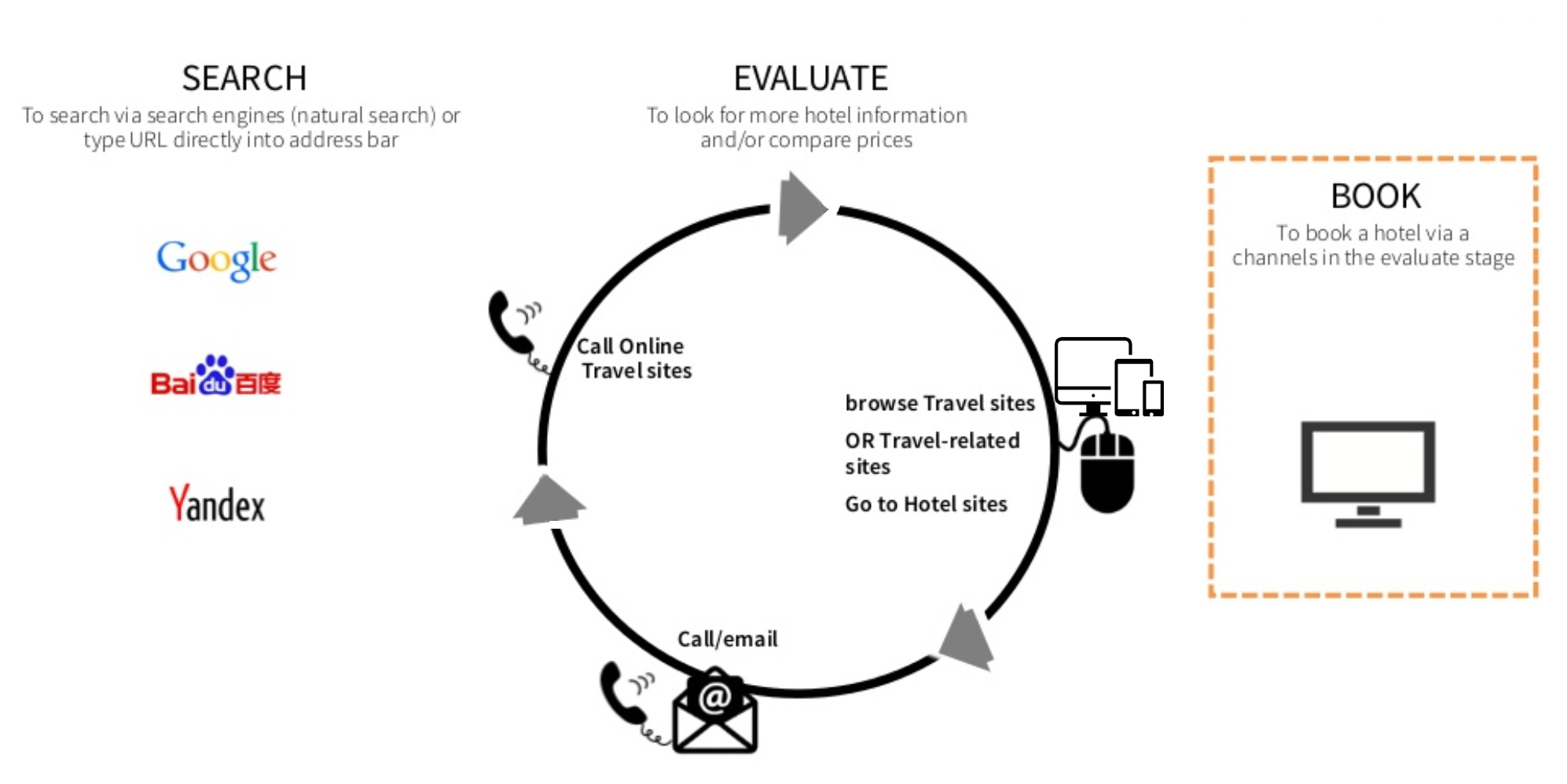
Mindset strategy
Normal mindset was legacy based where the mantra was to follow creating a US centered digital experience in English language and then translating that into local language websites to cater to the needs of the local markets outside of the US. That had not worked in favor of reaching to the global audience because it did not resonate with the local mindset and did not address the cultural sensitivities and uniqueness of the markets.
,
The new mindset model was based on extensive research and understanding of the local cultures their needs, and relevant content to power the experience. Small but very crucial interests like color psychology, visual sensitivities, language barriers, product influences and importances like food and dining experiences in Asia which was more crucial for the customer in decision making during search and shopping were taken into greater consideration.
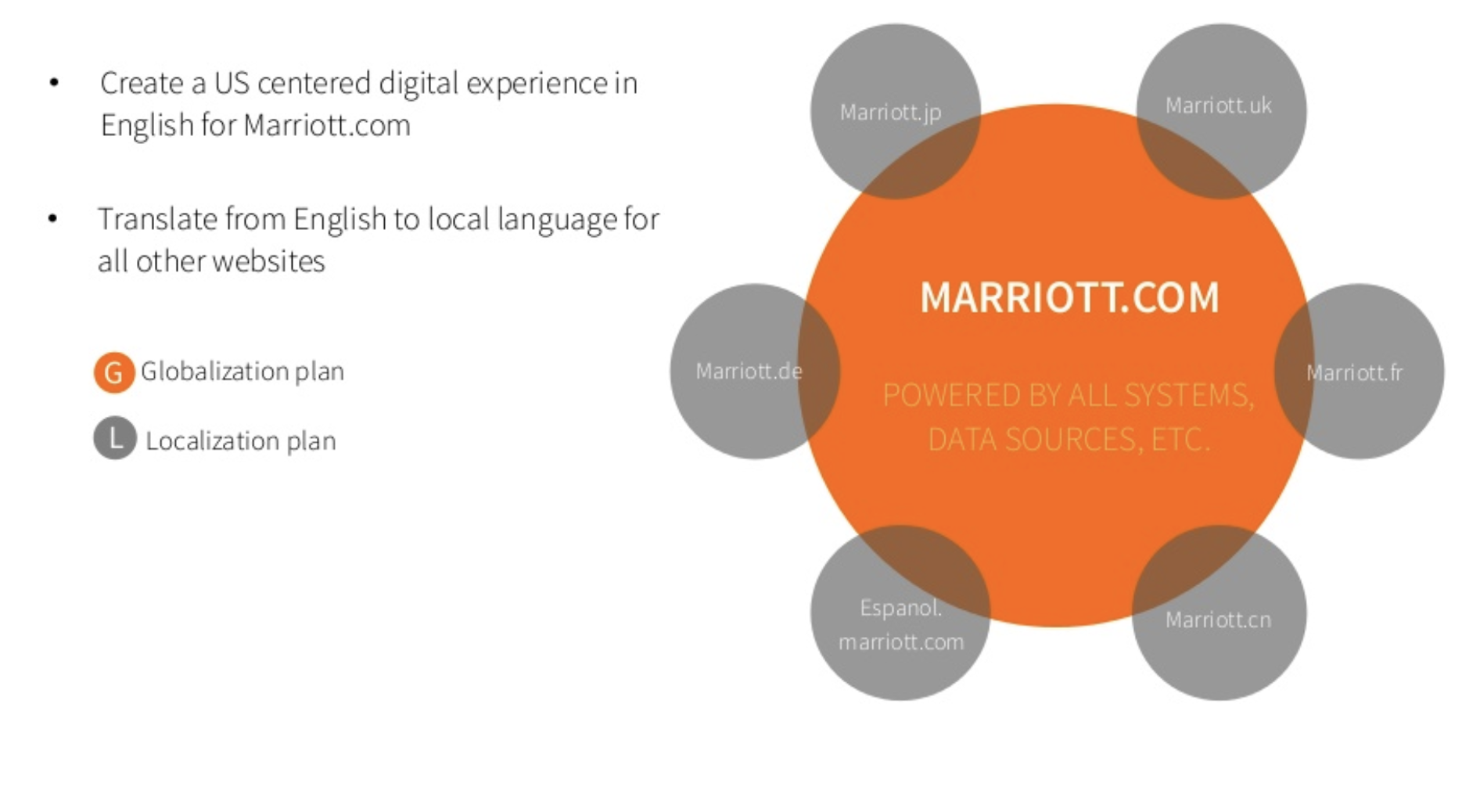
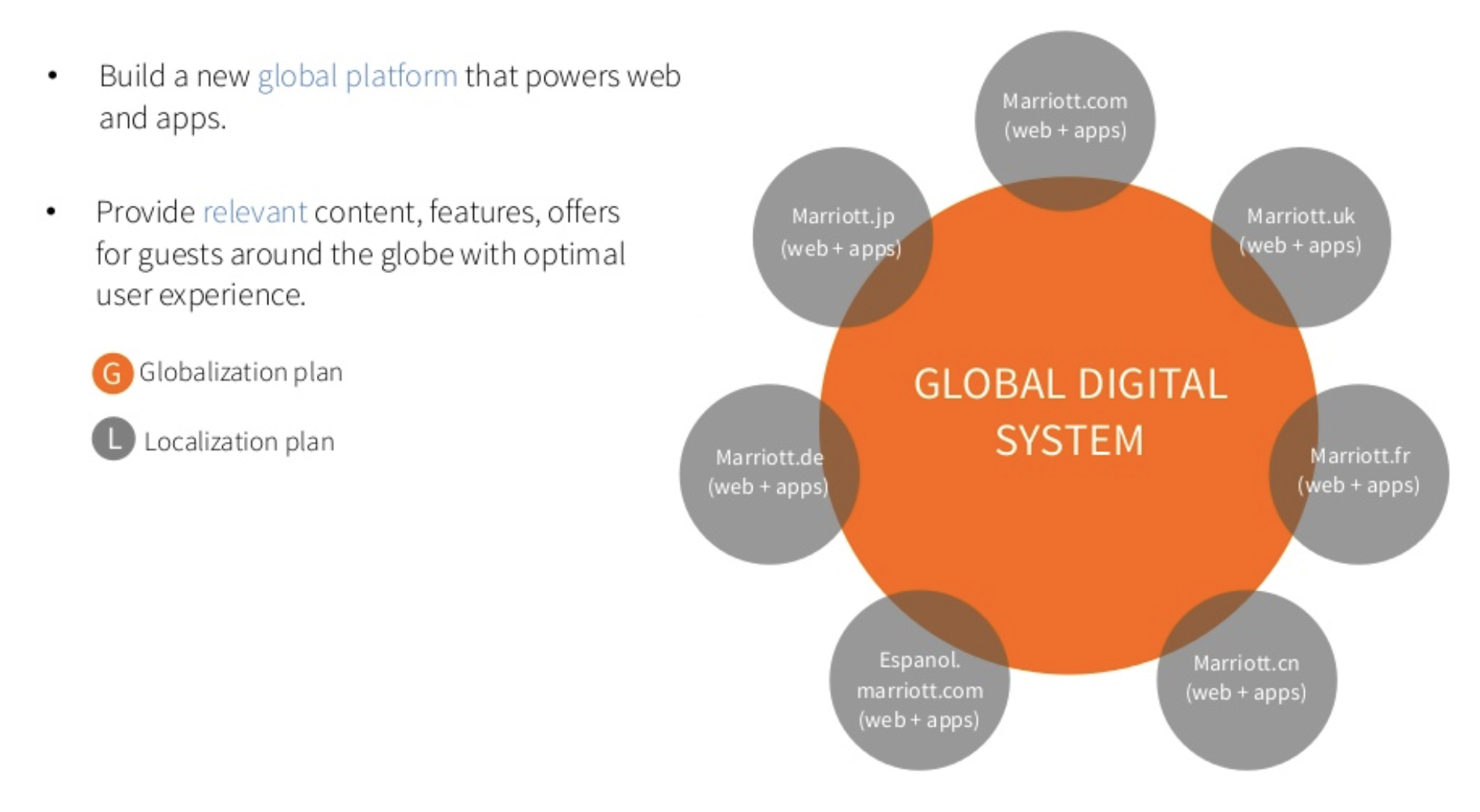
Research focus
Our research was based on independent studies that were conducted across the world including the US & Canada, Europe, Caribbean and Latin America, Middle East & Africa, Asia Pacific.
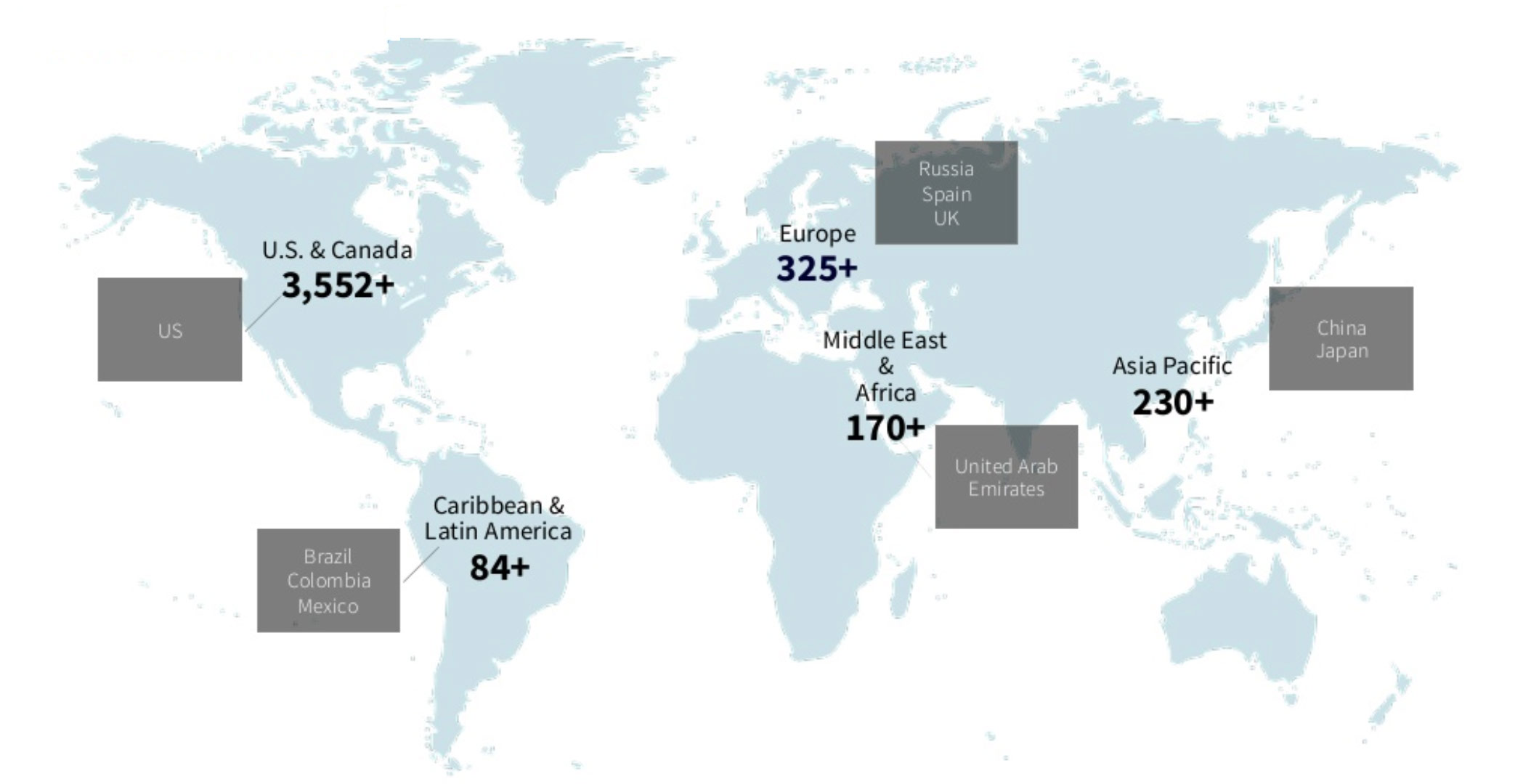
Our Process
We followed an agile process which started with understanding the user needs in the market to gain more insights into their behaviors, both online and offline. This explained what behaviors of the users were relevant to their online shopping experience.
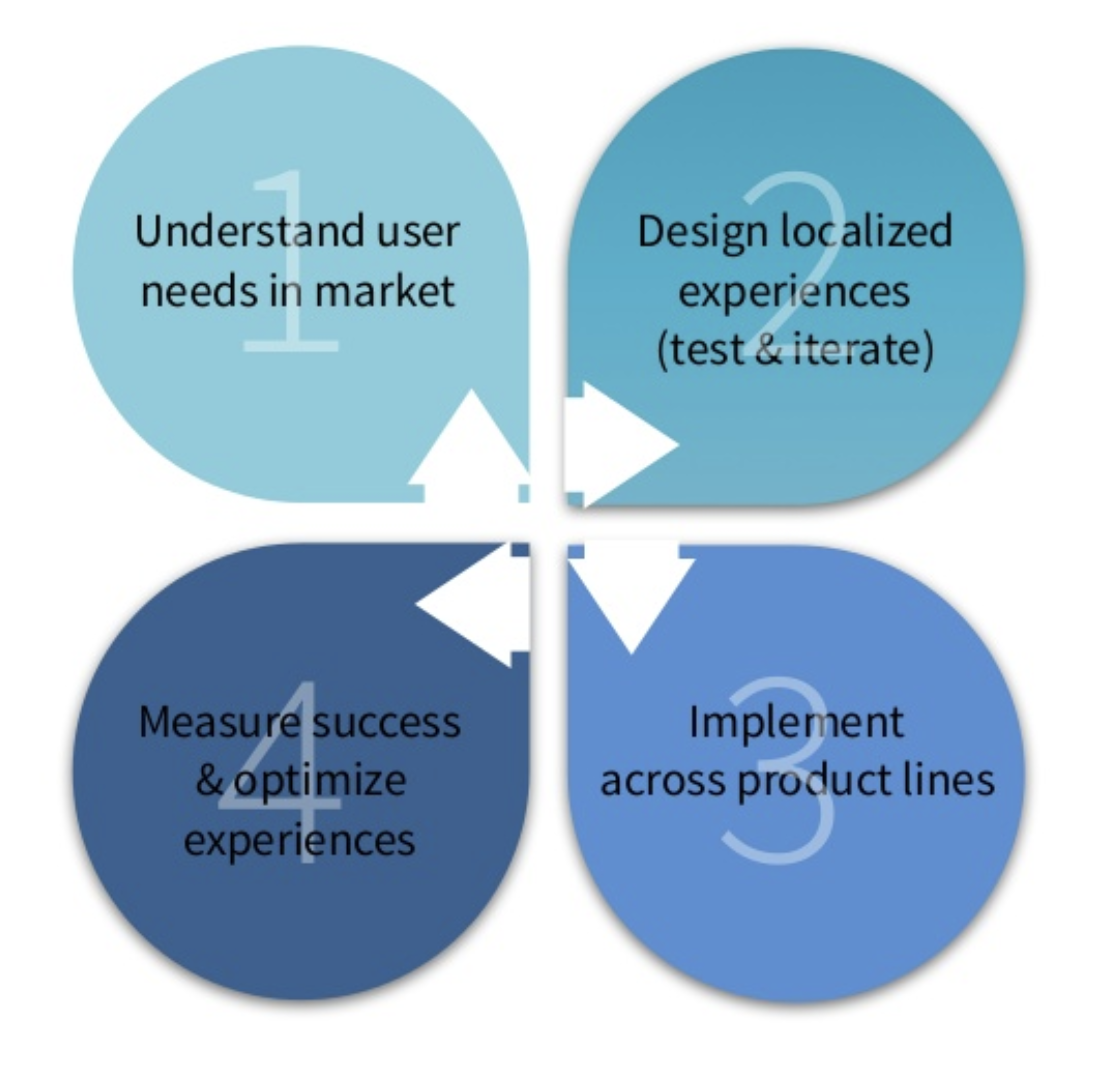
Unique learning
One of the key learnings from our efforts helped us to confirm that 80% of the online consumer behaviors are globally consistent. There are those locale unique features that come out of understanding the regional cultures, markets and behaviors that form the rest of the 20% of the experience which makes it unique.
80% of the customers global needs were about pricing, location, hotel amenities, room information (mainly photography), ratings/reviews and deals.
20% of these needs were very specific like customized forms for the region (ex: address general to specific Vs Specific to general (China Vs US)), color preferences (Bold and dark colors in some parts of Asia is considered luxurious and attractive), cultural sensitivities like food, (Restaurants are the center of attraction in many regions of the world) and most importantly payment systems (Regional specific payment systems, COD - in South American countries)
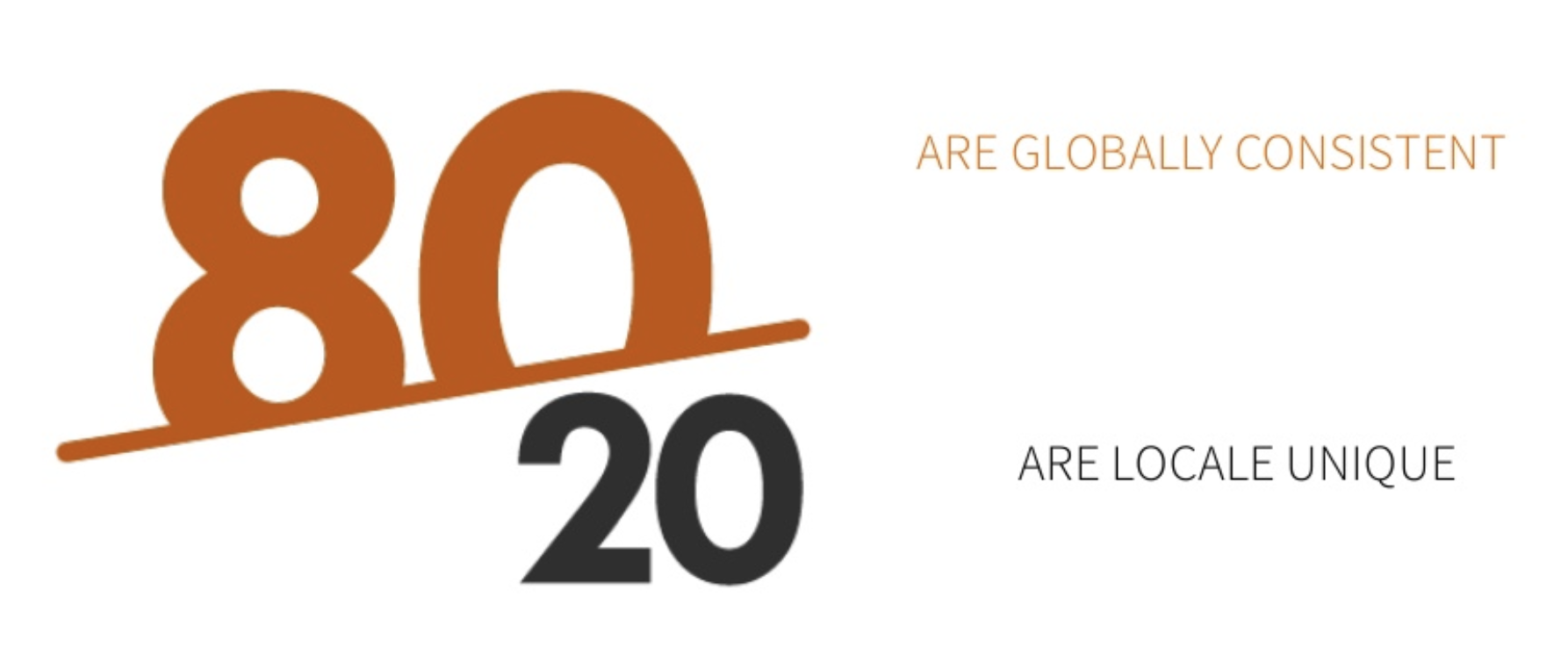
Design and development
The first version of the Japanese map search was implemented using vector based maps created in house by the team. The long term strategy was to integrate real maps using API's in the later phase of the development cycle. The first version launched used bit maps to render the map search and mimics real map search experience. The final implementation will link the API's and integrate actual maps from google.
